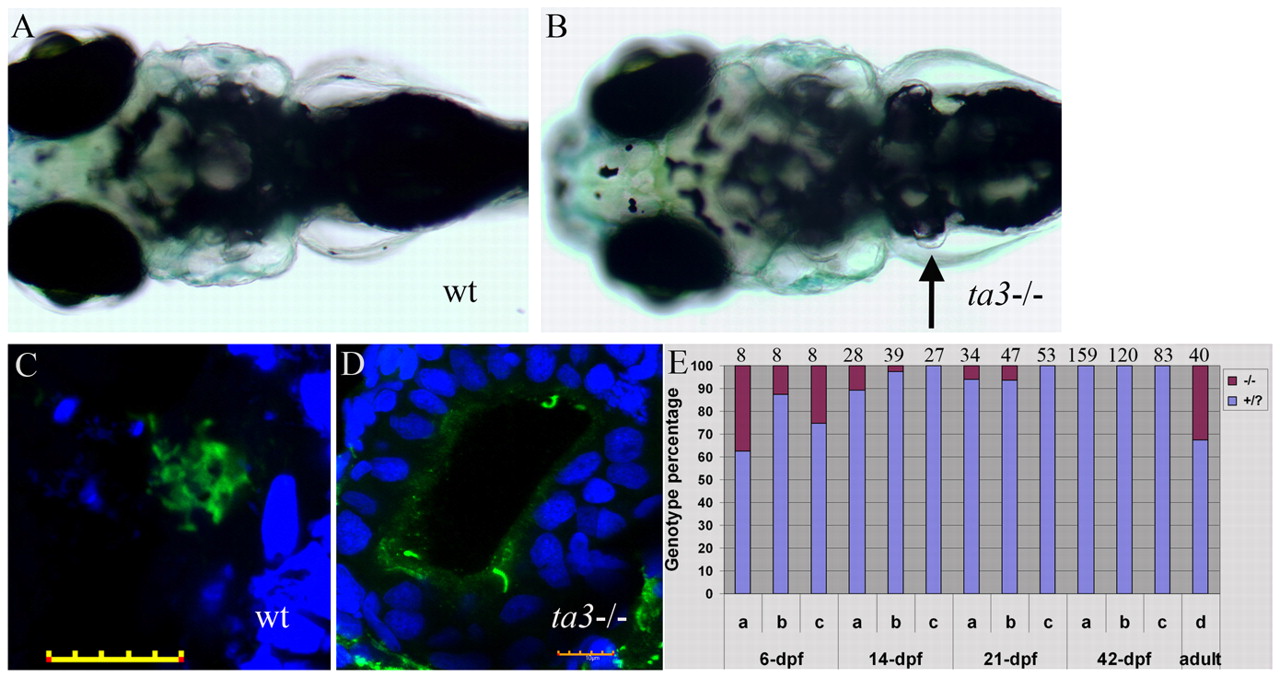Fig. 3 Zygotic loss of ta3 causes cystic kidney phenotype and larval lethality. (A,B) Wild-type (A) and ta3i265/ta3i262 trans-heterozygous mutant (B) larvae at 8 dpf showing the characteristic nephron ‘bubble’ (arrow in B). (C,D) Optical sections of pronephric tubules from wild-type (C) and ta3i265/ta3i262 mutant (D) larvae stained with anti-acetylated tubulin (green) to mark the axonemes of cilia and DAPI (blue) to mark nuclei; note the increased number of nuclei and the reduced number of cilia (green) in the dilated tubule lumen of the mutant compared with the narrow lumen and densely packed cilia in wild type. Scale bars: 10 μm. (E) Histogram showing percentage of animals transheterozygous for three different allelic combinations: (a) ta3i262× ta3i264; (b) ta3i268/ta3i266× ta3i263; (c) ta3i265× ta3i262 (represented by red shading) relative to heterozygous and homozygous wild-type siblings (represented by blue shading) 6, 14, 21 and 42 days post-fertilization (dpf). Most trans-heteroygotes fail to survive beyond 42 dpf. Animals homozygous for ta3i267 (d) are almost fully adult viable. The numbers above each column indicate the sample size.
Image
Figure Caption
Figure Data
Acknowledgments
This image is the copyrighted work of the attributed author or publisher, and
ZFIN has permission only to display this image to its users.
Additional permissions should be obtained from the applicable author or publisher of the image.
Full text @ Development

